Ancient oak tree (c.450 years) in Pigney’s Wood, Norfolk, 20 December 2024
Hello, and a warm stove-side welcome to this late December edition of Bracken & Wrack.
Here we are, somehow already beyond the midwinter solstice. The full moon has dwindled to the size of an orange segment, and today is the mystical Nameless Day that I wrote about at this time last year.
Along the lane the colours are astounding. While you might imagine this time of year to be increasingly colourless, the opposite is actually true. Wandering through Crow Wood, every few steps a new combination of hues is revealed, Who could ever think that silver birches are all the same? As I touch each trunk I imagine how its bark might gleam under the silvery light of the moon and the twinkling of stars.
Are they waiting patiently in their shimmering attire for dusk to fall so that they can dance, shaking out their wild tresses? Those who slumber in their beds will never know ;-)
Waiting for the dance, 18 December 2024
When I scroll up and down my camera roll at this time of year, all I seem to see are sunrises and birch trees. That’s not surprising in our little corner of the landscape where the Eastern sun slides softly up over the sea, turning the waves to flaming rose, and where Northern birches clothe the low hills and hollows.
And the story of birch is intimately woven into this publication. After all, Bracken & Wrack is named for the path I walk between the heath and the sea in my native Norfolk, land of the Iceni. This path - once walked alone and now often joyfully accompanied - wends this way and that across fields, woods, gorse-bedecked heathland and the wide North Sea. At this time of year it becomes the Birch Track, inspiring the things I make and the words I write.
It is, of course, far more than a literal track. It’s a soft bed of golden birch leaves, icy northern magic, bright toadstools, lace-edged deer tracks and always the silvery glimmer of birch bark to lure us deeper between the trees.
Any research into the birch tree will quickly reveal it to be a tree of beginnings, having been first to lay root into land exposed by the receding ice. But its branches extend way beyond this. Traditionally used to make cradles, and with a place in funerary custom, it takes us full circle from birth to burial. The birch is a sacred tree in every land in which it grows. It’s also the tree for the first month in the Tree Calendar. And that begins on 24 December!
The first forest was a birch wood and the tiniest sliver of birch bark is a key to open the gate. Turn the key in a deep fissure in the silvery bark and gain access to that ancient place, humming with healing, wisdom and magic. I feel it every time I step into the part of Crow Wood thickest with birch.
I dance with dwarves
I speak with sea-elves
I feast with field-elves
I wait for water-elves
I jump with giants
I hobnob with hobgoblins
I foot it with fairies
I hide with hidden folk
I make magic with mound-elves
I try to trick trolls
I watch for wards
Two years ago, Bracken & Wrack went out on The Nameless Day. This, in magical tradition, is the mysterious day between the endings of the solar and lunar years. If you divide the year into 13 lunar months of 28 days each, you find you have a single day unaccounted for to make up the solar year of 365 days. This is The Nameless Day. I have read that this is the ‘Day’ of the ‘Year and a Day’ of myth and fairy tale.
A time out of time.
‘The Nameless Day. A day that slips between the worlds, is no-time. Some say that it’s the day after the Oak King defeats the Holly King when the old king is dead and the new one still unborn.’
And as it happens, I am writing to you again on 23 December - The Nameless Day. For years I have been intrigued by this idea of a day removed from the mechanics of time and space. I wonder whether you, as I do, feel a sense of liminality as it unfolds? Perhaps it’s the position of it between the Midwinter Solstice and Christmas Eve or perhaps it’s something else entirely.
In any case, I think it’s no coincidence that this newsletter has taken me so long to assemble that we find ourselves here together again.
Late as ever, half way through December I rummaged through the Christmas decoration box brought down by wobbly stepladder from the loft. There I found what I was looking for; a free-standing cardboard Advent Calendar that I acquired a couple of years ago. Each day there’s a different little numbered piece to find the slot for an pop into it. Gradually, the calendar grows into something rich and beautiful, especially with a copper strand of sparkling stars wound around it.
Now, all the resources seem to agree that. along with mistletoe - which I wrote about here the White Hart or Silver Stag is the most potent symbol and marker of this Day. As my calendar is a mainstream one and not marketed as esoteric in any way I was amazed to discover that a beautiful Silver Stag was the nominated piece to pop into its slot on 23 December! I know that some of you will remember the words I wrote about this two years ago, but for our many new friends, here it is again:
This wispy day, so hard to feel the shape of, is probably best known through its inclusion in the Celtic Tree Calendar, based on the Ogham alphabet. In this, each of the 13 lunar months is allotted its own patron tree, with 23 December standing apart from the rest. The calendar itself is mostly an inspired invention of poet and scholar Robert Graves, who first published his idea in The White Goddess (1948). Although Graves took liberties in his interpretation, his theory has a basis in known practice. The Druids did, according to Roman accounts, follow a lunar calendar, and their Ogham writing system did equate each letter with a different tree.
As accurate historical records of the Druids’ activities are scarce, many of Graves’ ideas were based on the work of Irish historian Roderick O’Flaherty, who, in 1685, had published a history of Ireland. This work went into great detail on the myths and legends of Ireland and contained a chapter on interpreting the ancient Ogham alphabet. Graves was probably inspired, too, by the fourteenth century Book of Ballymote, which also included information about the Ogham.
The Nameless Day has been referred to in Druid circles as the Day of Creation, the Feast of Potentials and The Secrets of the Unhewn Dolmen. The latter comes from a line in the Song of Amergin, reputed to be the oldest poem known from these lands:
Who but I knows the secrets of the unhewn dolmen?
An unhewn stone is rough, unshaped, virgin with infinite potential. I love the thought that it could take any number of shapes or have any image or word carved into it. No wonder the Day itself is ‘wispy’ as I found myself reflecting earlier! There is also the mysterious notion that, just maybe, the fate that lies within it - perhaps even just below the surface - is already there waiting to be uncovered.
The Silver Stag - look, there’s the number 23 :-)
The dreamed Christmas,
flakes shaken out of silences so far
and starry we can’t sleep for listening
for papery rustles out there in the night
and wake to find our ceiling glimmering,
the day a psaltery of light.
A day foretold by images
of glassy pond, peasant and snowy roof
over the holy child iconed in gold.
Or women shawled against the goosedown air
pleading with soldiers at a shifting frontier
in the snows of television,
while in the secret dark a fresh snow falls
filling our tracks with stars.
Gillian Clarke, from ‘Snow’
THE HERRING LASSIES
Here’s Part 2 of the series I started in the last Bracken & Wrack, exploring the subtle folkloric links between Scotland and Norfolk. Connections that I seem to keep coming across. Inspired by the turning of the Wheel to St Andrew’s Day I began exploring some of these threads in order to satiate my own curiosity, but I hope that you too will find them interesting. Maybe you too will feel drawn to playing with unlikely correspondences connected to your own heritage - or the place that you call home.
I’d already heard of the Herring Women of Great Yarmouth and knew that they came from Scotland, and that was my starting point. But how I wish I could find out more about their rituals, songs and traditions! If you know of any, please do let me know in the comments. Meanwhile, this is what I know so far.
The relationship between Norfolk people and the coast is a long and close one. For hundreds if not thousands of years, generation upon generation of fishermen have braved the stormy north sea to earn a living by bringing in their catches.
It was after the introduction of the railways in the nineteenth century that the East Anglian fishing industry really exploded. Every possible corner of its ports was given over to curing, pickling and packing herring. Now fishermen could land fish one morning and their agents get the catch into the fish markets of big cities like London or Manchester by the next.
It’s hard now to truly imagine how busy and vibrant the East Anglian ports once were. Amazingly, in 1913 more than 380,000 tons of herring were landed at Great Yarmouth and Lowestoft between September and December. As the food of the masses, herring was in huge demand and there was plenty to go around. The story goes that at one time Lowestoft harbour was so packed with fishing vessels that you could easily cross the harbour without getting your feet wet.
The work required to get the catch ready for sale was immense. During the autumn migration of herring shoals from Scotland down the north sea, the population of Great Yarmouth was swelled by 10,000 workers. From the late 1860s, women and girls began travelling south to Great Yarmouth for the herring season, and From the late 1860s around 6,000 of those employed were the Scottish women (and girls from the age of 15) who followed the migrations from the north of Scotland along the east coast to gut and pack herring in vast quantities. In documents of the time these women are called the herring girls, the Scottish herring lassies or Scots fisher lassies. An essential and lively part of the workforce within the fishing community, their annual arrival was eagerly looked forward to.
Rooz - Bal Maidens’ Chant - traditional Cornish women’s folk song to help along the manual work of splitting rocks in the tin mines - you can hear the striking of rocks as percussion. Herring women probably had their own versions of folk songs to brighten their days.
The women travelled south with their clothing, boots, oilskins and blankets packed in a ‘kist’ (chest). Many were employed by the same Great Yarmouth herring curer each autumn season.
Herring women worked in teams of three. Two were fish gutters and the third member of the team packed the gutted herring into salt barrels. It was cold and fast work, with a herring being gutted and packed every ten seconds. During a 10 hour day, each team was often able to pack 30 barrels, each containing about 700 gutted herrings.
Imagine those working conditions. When the easterly wind cuts into you as you walk along Great Yarmouth’s North Beach, just think how it felt for the herring women on the quay, handling icy fish and working at speed for whole days at a time. The women were woken at 5am to bandage their fingers for the work ahead, as the special sharp gutting knife, a cutag, meant that painful nicks and cuts were a constant hazard. Binding their fingers helped to prevent infection and salt from reaching the wounds, but can’t have been entirely effective. On top of this, pay was low, the average take-home pay for the whole season being about £10 to £12 up to the beginning of the twentieth century.
In an under-documented case of direct action (and rather wonderfully) the Scottish herring women were involved in starting a strike in 1936 to improve pay.In November of that year, the herring industry in Great Yarmouth was brought to a halt when the strike began, organised entirely by the women themselves. In unofficial direct action, 3,000 women went on strike demanding a shilling (5p) a barrel for the gutting and packing of the herring, an increase from 10 old pennies (there were 12 pennies in a shilling).
During the week of the strike, herring continued to be brought to shore while the Scottish women and girls protested and encouraged other herring workers to join them. The Transport and General Workers Union then became involved, and mounted police from London were even brought in. It was a historic strike, being a rare example of collective action where working women managed to bring about improved working conditions and pay.
Although remembered in Great Yarmouth with periodic displays and art projects, it’s true to say that the Scottish herring women’s protests and strikes - there were more rumblings before they met with success - have generally been sidelined and few know of them.
But echoes and stories of the Scottish herring lassies do linger in Norfolk. Whenever the strikes are mentioned, old memories surface and are shared in social media. In 2021, Norwich and District Trades Council made mention of the strike action where women travelled from Barra and Lewis to Great Yarmouth on trains provided for the fishing industry, as support and righteous indignation was drummed up in widely varying Scottish fishing communities.
So many more stories out there. I can only imagine how feisty and bold the offspring of those lassies and the Yarmouth fishing boys are likely to be, given the Viking blood coursing through them both. Lots of the villages around Great Yarmouth have names ending in that telltale Viking -by, including Billockby, Rollesby, Clippesby, Hemsby, Stokesby and Ormesby so that’s not as a wild a theory as it may sound.
Then there are the folk songs of Great Yarmouth, and the folklore specific to that town. Out on a limb as it still is, it’s always had its own Ways, even its own dialect. And if I begin to talk about its witches and witchcraft stories, well that’s a whole new story.
THE HERRING WOMEN’S HEALING SOUP
Now, I am not suggesting that the herring lassies had access to ingredients like these, nor even an easy way to cook them. I don’t know what facilities they would have had, nor what they would have eaten in the evenings. What I do know though, is that a one-pot soup full of good things and immunity-boosting additions like ginger and garlic would have been perfect fare to warm them inside and out. Borrowed from the Romanies and utilising all five of their *traditional ‘healers’, I like to think it would have helped them cope just a little better with long working days in the biting easterly winds they must often have encountered.
2 tbsp olive oil
2 cloves garlic
1 onion
2 carrots
2 celery sticks
chunk of ginger, about 30g, peeled and chopped or grated
0.5 teasp chilli flakes
2 bay leaves
About a litre of vegetable stock depending on your pan size
150g pearl barley, rice, orzo, couscous or buckwheat grains
1 head of broccoli, cauliflower or equivalent quantity of another brassica
1 tin chickpeas
1 lemon, zested and juiced
Handful of chives for the top, chopped, if available
Sea salt and black pepper
In a large saucepan, warm the olive oil and add garlic, onion, celery, carrot, ginger, bay leaves and a pinch of salt. Cook for 10 - 15 minutes until softened. Pour in the stock and simmer for 10 minutes.
Meanwhile bring a pan of salted water to the boil and cook your grain or pasta until al dente, depending on your choice this will take varying amounts of time. Drain and divide between bowls.
Remove soup from heat, remove bay leaves, and blitz with stick blender (or use a regular blender). If you don’t have one or prefer to keep it chunky you can skip this step.
Return the pan to the heat, bring to a simmer and add the chickpeas and broccoli or other brassica. Cook for a few minutes until the brassica is cooked, then stir in the lemon zest and juice.
Ladle the soup over the grain/pasta, scatter over the chives if using, a pinch of chilli flakes, a drizzle of olive oil and plenty of black pepper.
*I understand that the Romany ‘traditional healers’ are onion, garlic, ginger, chilli and lemon. If you include the chives that’s another member of the onion family, making it even more potent.
On the heath - I still have my childhood tin tambourine :-)
We say Next time we’ll go away,
But then the winter happens, like a secret
We’ve to keep yet never understand
As daylight turns to cinema once more:
A lustrous darkness deep in ice-age cold,
And the print in need of restoration
Starting to consume itself
With snowfall where no snow is falling now.
Or could it be a cloud of sparrows, dancing
In the bare hedge that this gale of light
Is seeking to uproot? Let it be sparrows, then,
Still dancing in the blazing hedge,
Their tender fury and their fall,
Because it snows, because it burns.
Sean O'Brien, ‘At The Solstice’
THE HOLLY & THE IVY
She saw Holly’s dress and socks and shoes. She is red and green too, thought Ivy. She saw Holly’s hair, brown eyes, little teeth and beautiful joints. They were just what Ivy liked, and ‘My Christmas doll!’ said Ivy.
Holly saw Ivy’s face pressed against the window as she had seen so many children’s faces that day but, ‘This one is different,’ said Holly. Ivy’s hands in their woollen gloves held to the ledge. Holly looked at Ivy’s hands. Soon they will be holding me, thought Holly. Ivy’s coat even in the moonlight was as beautiful a green as Holly’s dress was a beautiful red, so that they seemed to match, and, ‘My Christmas girl!’ said Holly. - Rumer Godden, The Story of Holly and Ivy
If you don’t know The Story of Holly and Ivy then I can’t recommend it highly enough. It’s a book to bring out and enjoy Christmas after Christmas (either with or without children to read it to - but mine loved it too). I don’t tend to cry over books but I defy anyone to get past page 31 without their eyes brimming.
Getting the book out again this year has prompted me to find a charm or two connected with these two most seasonal of woodland denizens. After all, as you slip between the bare trunks of birch, oak and hazel you’re immediately surrounded by the vivid green of these two magical trees winding their way between and through all the others.
Holly and the most amazing ivy I’ve ever seen, Pigney’s Wood, Norfolk, 20 December 2024
THE HOLLY BEARS THE CROWN
In his Walking The Tides, Nigel Pearson advises that it’s as well to have some holly hung up around the house during the Midwinter period as a ‘male’ presence to balance the ‘feminine’ ivy. He suggests making a holly and mistletoe ball to suspend from a suitable hook, wrapping a potato with ribbon or twine as a hanger and then pushing holly and mistletoe sprigs into it to cover it all over until you have a complete sphere. The moisture in the potato keeps the whole thing fresh until Twelfth Night, and although I’ve yet to try this it sounds a great idea. Let me know if you make one!
As for a holly charm, our Victorian Yorkshire wise woman - speaking through her great-granddaughter Claire Nahmad in Garden Spells - has this to say:
‘The handsome holly is a lucky tree, for it affirms life, and is a symbol of undiminishing vitality. Ensure that it has a place in your garden, for its glowing green presence wards off unfriendly spirits … Do not burn holly branches unless they are well and truly dead, for this is unlucky.’
She goes on to give a holly berry charm. As given it’s extremely expensive in beer (at today’s prices) so you may want to adapt it by trying it just once, at an appropriate moment in the season.
‘An old charm to help your garden grow is to pour a quart of ale into a silver tankard upon the night of each new moon, and to drop therein nine holly berries, having blessed them and washed them in its rays. Hold it aloft, speaking this charm to the moon:
Fair Selene I drink to thee!
May this mead a potion be!
As soon as the rune is chanted, you must empty the tankard over your hollyhocks, your foxgloves and your torch-lilies, and then you shall have fine blooms indeed.’
IVY - POET’S CROWNS, VISION & PROPHESY
As for the ivy - a favourite of mine - Nigel Pearson mentions that its vines have been wound into poets’ crowns and its leaves chewed for visions and prophesy. In times past it was bound around the forehead of revellers as it was said to prevent drunkenness and keep the mind focussed and clear. Did you know that the berries were once macerated in vinegar and used as a tincture to relieve symptoms of the Plague?
Seen as a ‘female’ plant, it’s a perfect counterpoint to holly and as Nigel says, ivy tendrils wrapped around the room at Yuletide will invoke the blessing and protection of the Mother.
Here is an ivy charm from Garden Spells:
‘An old lovespell runs thus: Pluck an ivy leaf and hold it against your heart, chanting three times as you walk:
Ivy, ivy, I love you,
In my bosom I put you.
The first young man who speaks to me
My future husband* he shall be.’
*or wife!
Now, I realise that it may take some time to see results from this one but, as ever, I would love to hear how it goes if you try it.
Enjoy the scents of the season and the deep peace of Midwinter.
Until next time.
With love, Imogen x
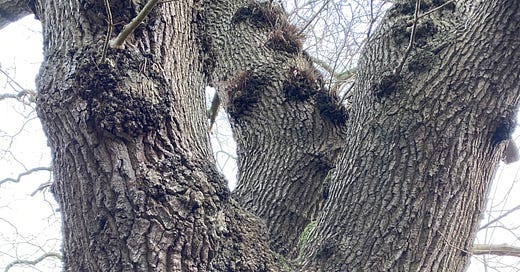



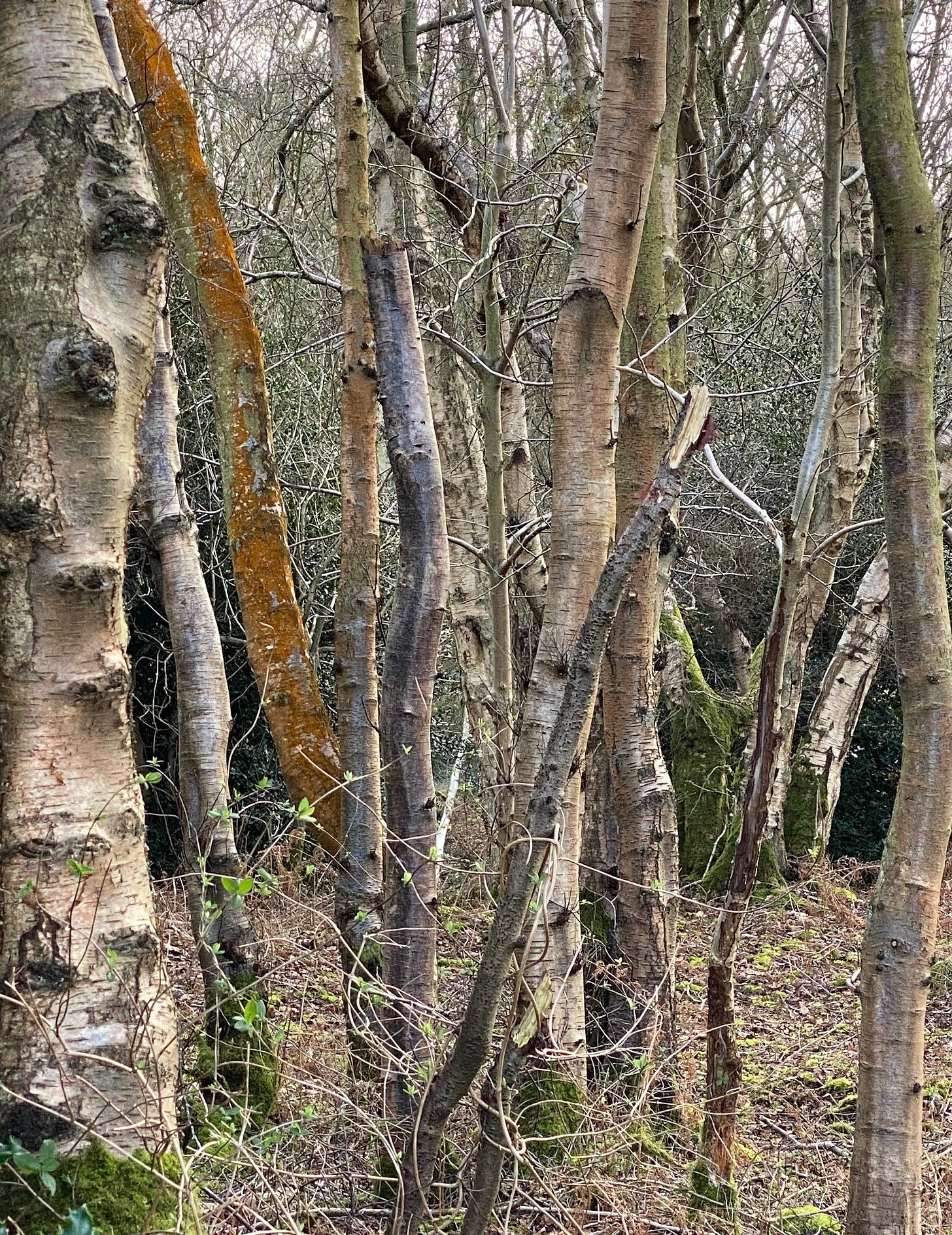
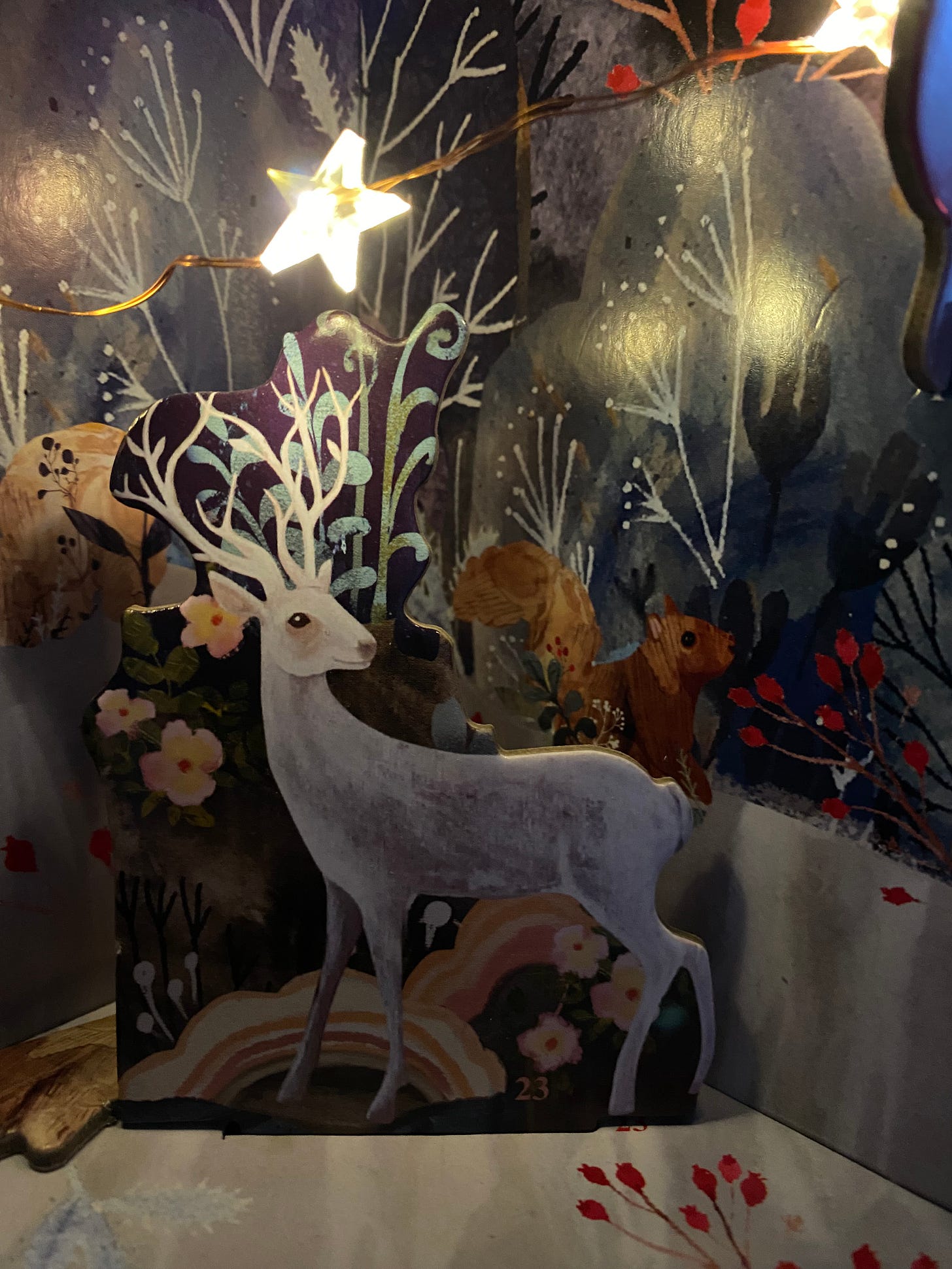
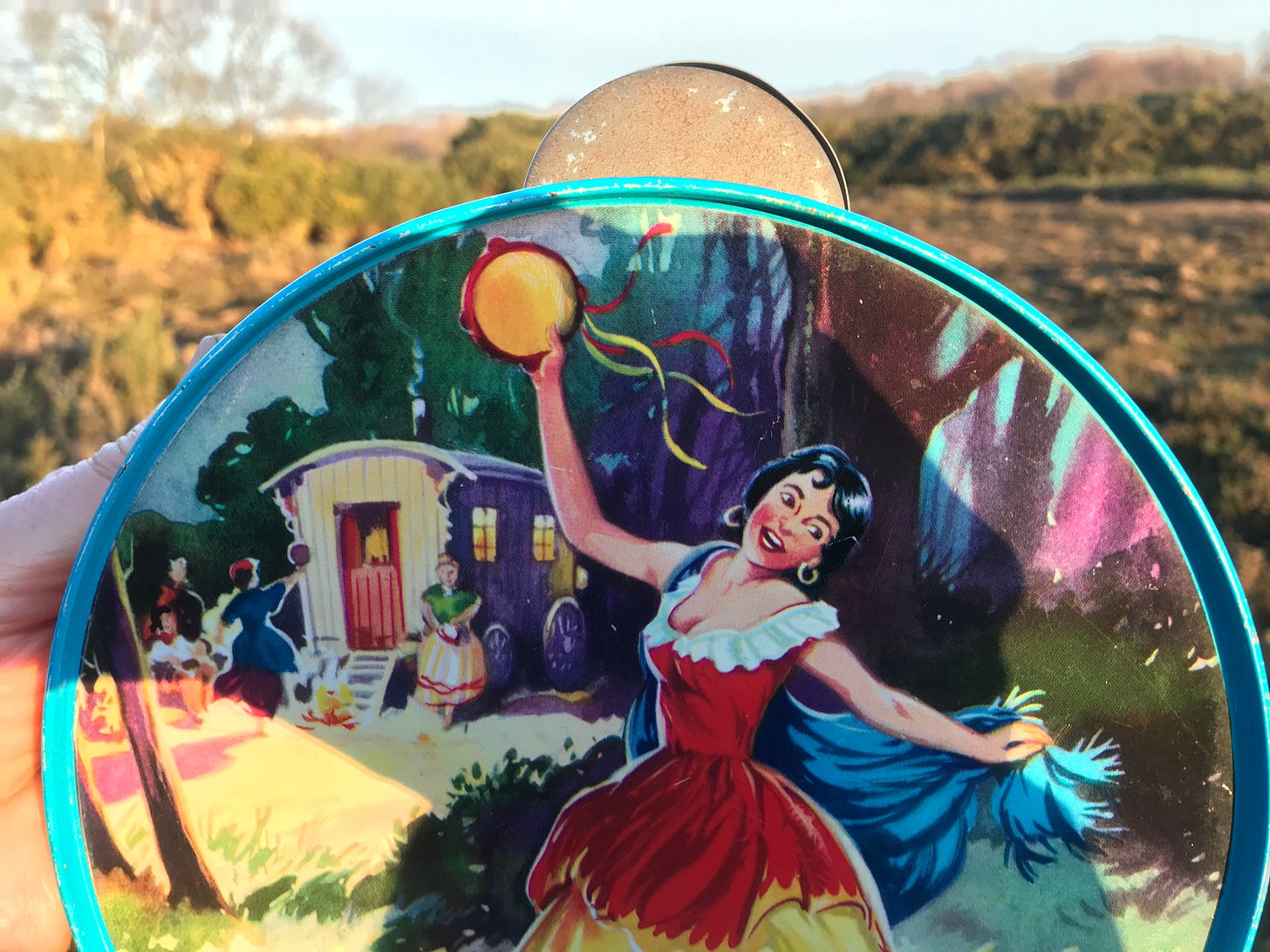
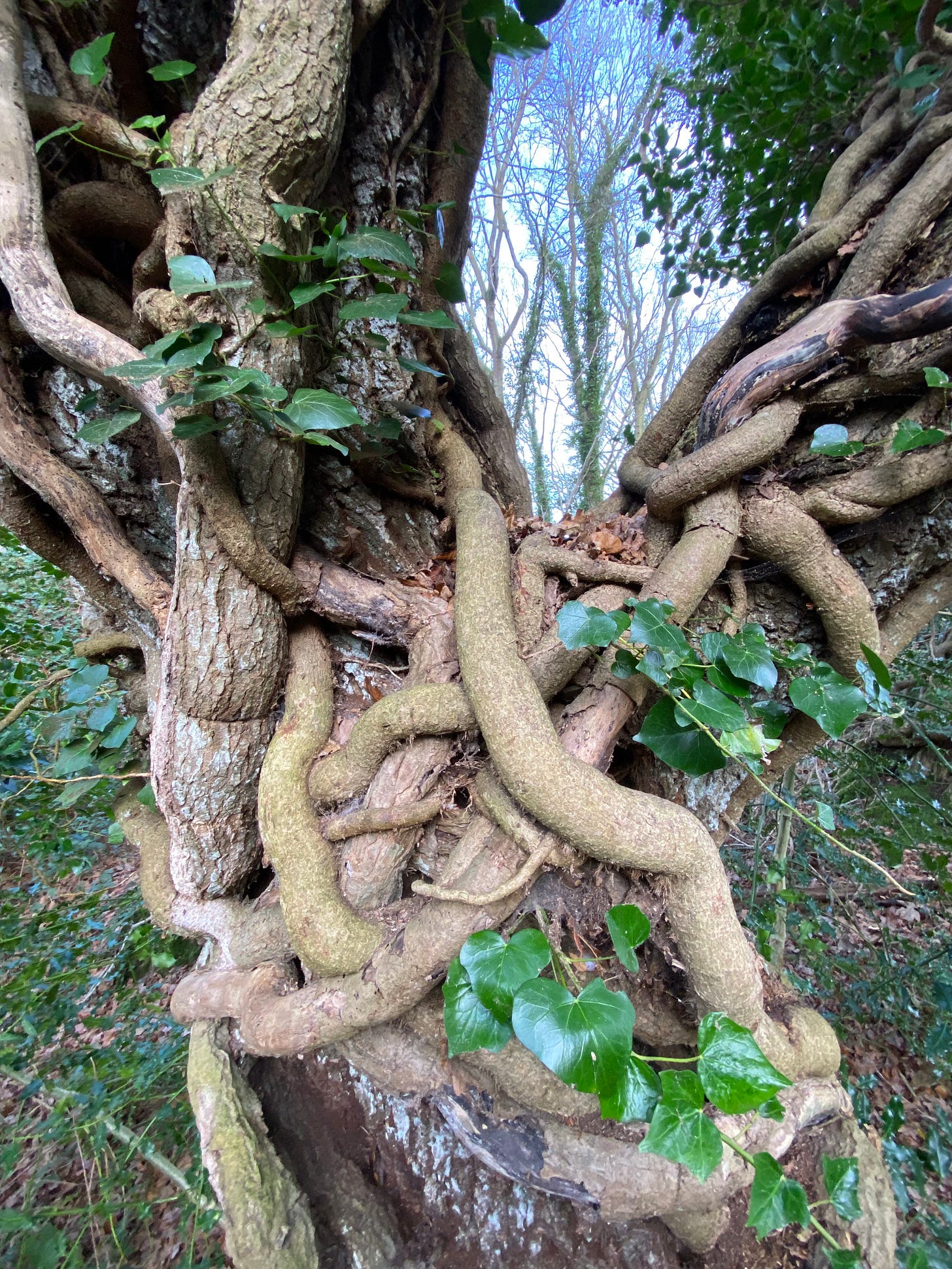
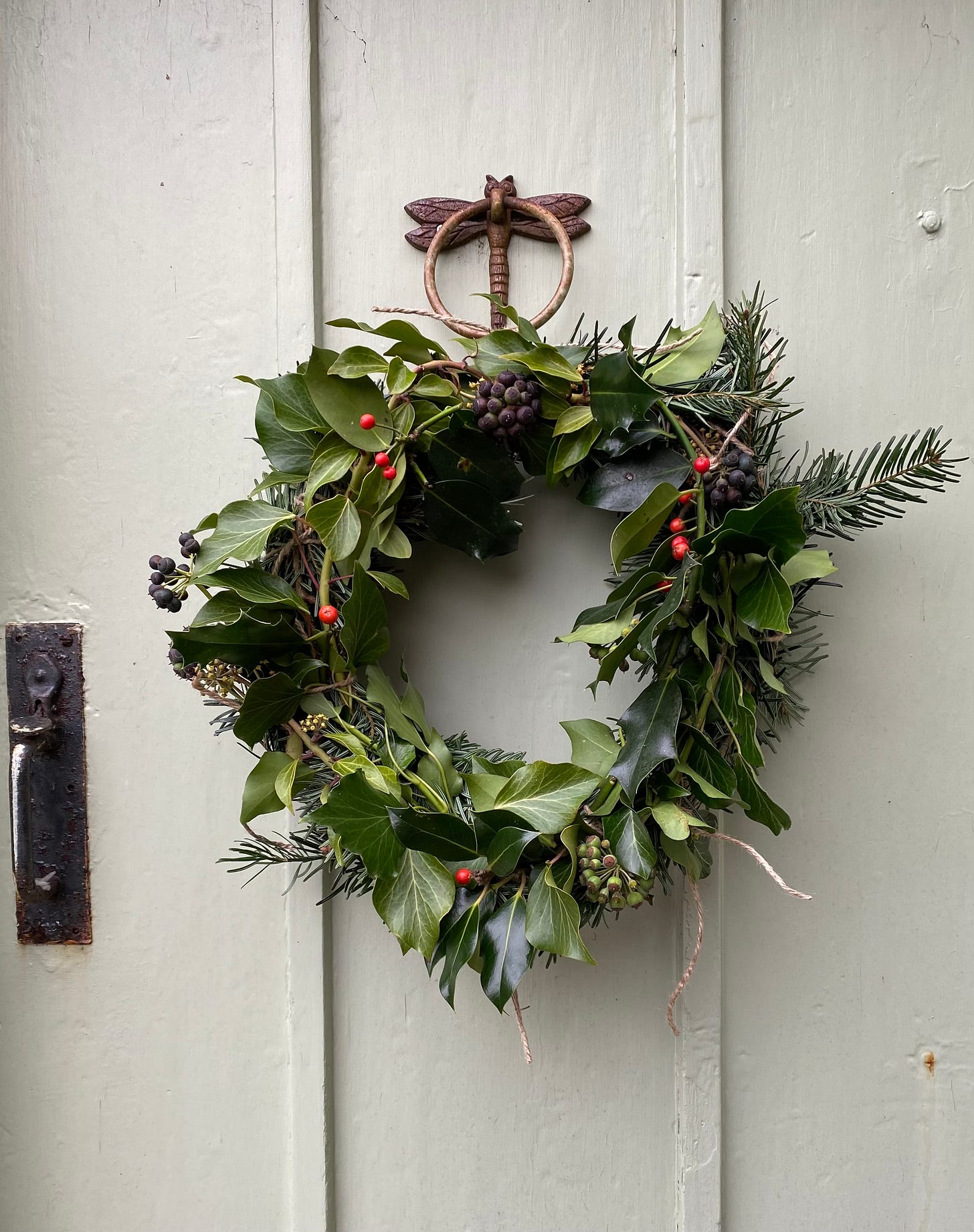
What a lovely post. I’m catching up late but next year I shall watch out for December 23rd and remember your writings.
Hi Imogen, you write beautifully and very interesting. Happy new year.